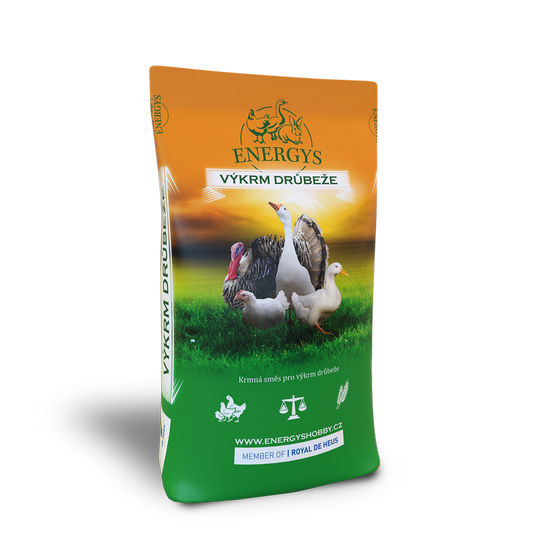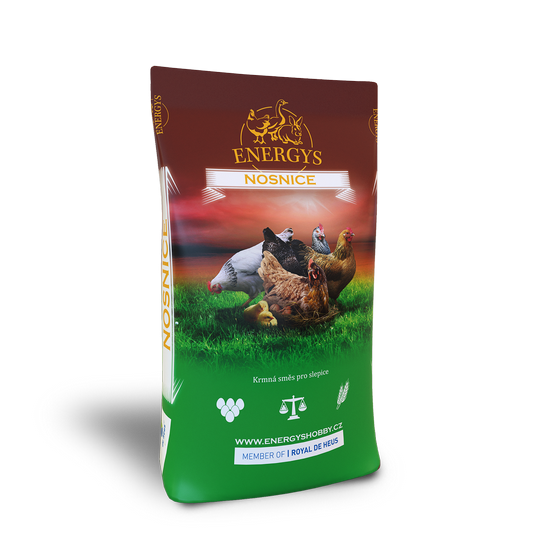Rabbits
Poultry
Laying hens
Quails
Guinea pigs
Pigs
Ostriches
Sheep and goats
Pigeons
Pheasants
Forest animals
Broodiness and stopping broodiness
Brooding is a natural reproductive process of a layer’s organism, which is intended for producing the next generation, which is also why the hen actually lays eggs. All this is controlled by hormones and this is affected by many factors. Broody hens do not lay and broodiness (which may last for several weeks) means a loss of several tens of eggs for the breeder.
Commercial layers are bred to produce the greatest number of eggs and broodiness is undesirable. The tendency to brood has been eliminated in them by selective breeding over the generations and broodiness is rather rare, but less usual hybrid combinations or “colours” become broody more often.
The tendency to brood or underdeveloped maternal instincts are a breed characteristic – for instance in traditional breeds, particularly heavier or miniature breeds, these natural reflexes have been preserved and the hens become broody more often to very often. After laying a specific number of eggs, the hen endeavors to sit on the nest – start brooding (the sounds it makes change to a typical “cluck-cluck”, it sits on the eggs for the incubation period (21 days) and subsequently cares for the hatched chicks for about a month.
If broodiness in your hens is undesirable (and this is nearly always – unless we want to hatch our own chicks), we must not give the hen the opportunity to sit on the eggs from the outset – most importantly, there must be no nest with eggs available. It is best to separate the hen from the flock, place it in an airy cage (de-brooding cage), we recommend you hang it in the “air”, this means that the hen has no peace for sitting and gets cold (broody hens have an elevated body temperature), reduce the amount of feed you provide for several days.
Hormonal products can also be used to prevent brooding – but we usually do not want to do this in small-flock conditions.
Related posts
8. April 2025
Breeders raising hens for egg production naturally want them to produce as many eggs as possible while keeping costs low. For this purpose, commercial breeders exclusively use specially-bred hybrid layer hens created by crossing different genetic lines of pure breeds. These hybrid breeds carry in their genetic information the desired traits such as a high…
19. June 2024
The domestic chicken, or hen, is one of the most important farm animals and provides benefits in the form of eggs and meat. Today, more and more emphasis is being placed on animal welfare. As a result, farmers are already starting to prepare for mandatory changes to the housing of laying hens. The following article…
19. February 2024
The popularity of raising chickens in household conditions has been rising in recent years. This trend may be due to several factors, one of these surely being the search of high-quality foods, a more sustainable lifestyle and desire for greater independence. Breeding chickens at home also allows owners to control the animals’ living conditions and…
26. October 2022
Chickens are the most numerous bird species ever, with 26 billion breeding representatives. Unsurprisingly, they are divided into several groups according to different aspects. Which division is the most common, and which breeds of hens should you definitely be familiar with?
3. October 2022
When keeping chickens, one may wonder how long a hen actually lives. There is no clear answer to this question. It always depends on several factors – some you can influence, some unfortunately you cannot. How can you contribute to the long life of your hens and how does the life of a fowl work?
Related products

POULTRY UNI 30
A mashed concentrate for fattening of all categories of poultry, which includes the highest quality soja. It is mixed with cereals in a ratio of 20-40% (by type or phase of fattening). It contributes to fast growth and a high meat content. It does not contain coccidiostats.

LAYER REPRO
Granulated feed for laying hen breeds. Supports higher hatching rates and the successful development of the embryo. Higher content of chosen substances). The laying hen must have access to an adequate amount of potable water.

LAYER GOLD
Granulated feed for laying hens when laying. Supports high laying eggs with a solid shell and a beautiful yolk color. It follows the feeding of the Chicken MIDI mixture. Indicative feed consumption per 1 year ranges from 50-60 kg / piece.

LAYER KLASIK
A powered feeding mix intended for laying hens. With its rough shredded structure it contributes to maximum usability.

CHICKEN MIDI
From the 5th week to the end of the 20 week old chickens. It follows on from feeding with the Chicken MINI feed. Through its make up it helps in the correct development of the organism and with future high usability. It doesn’t contain coccidiostats. It is produced in two forms, granulated and powder.

CHICKEN MINI
A crumbled compound feed without anti-coccidiosides. Suitable for reared chickens of the laying hen type till the end of their 4 weeks of age. It contains a balanced ratio of nutrients supporting the correct development of chickens. For weaning chickens the following mix is CHICKEN MIDI.
